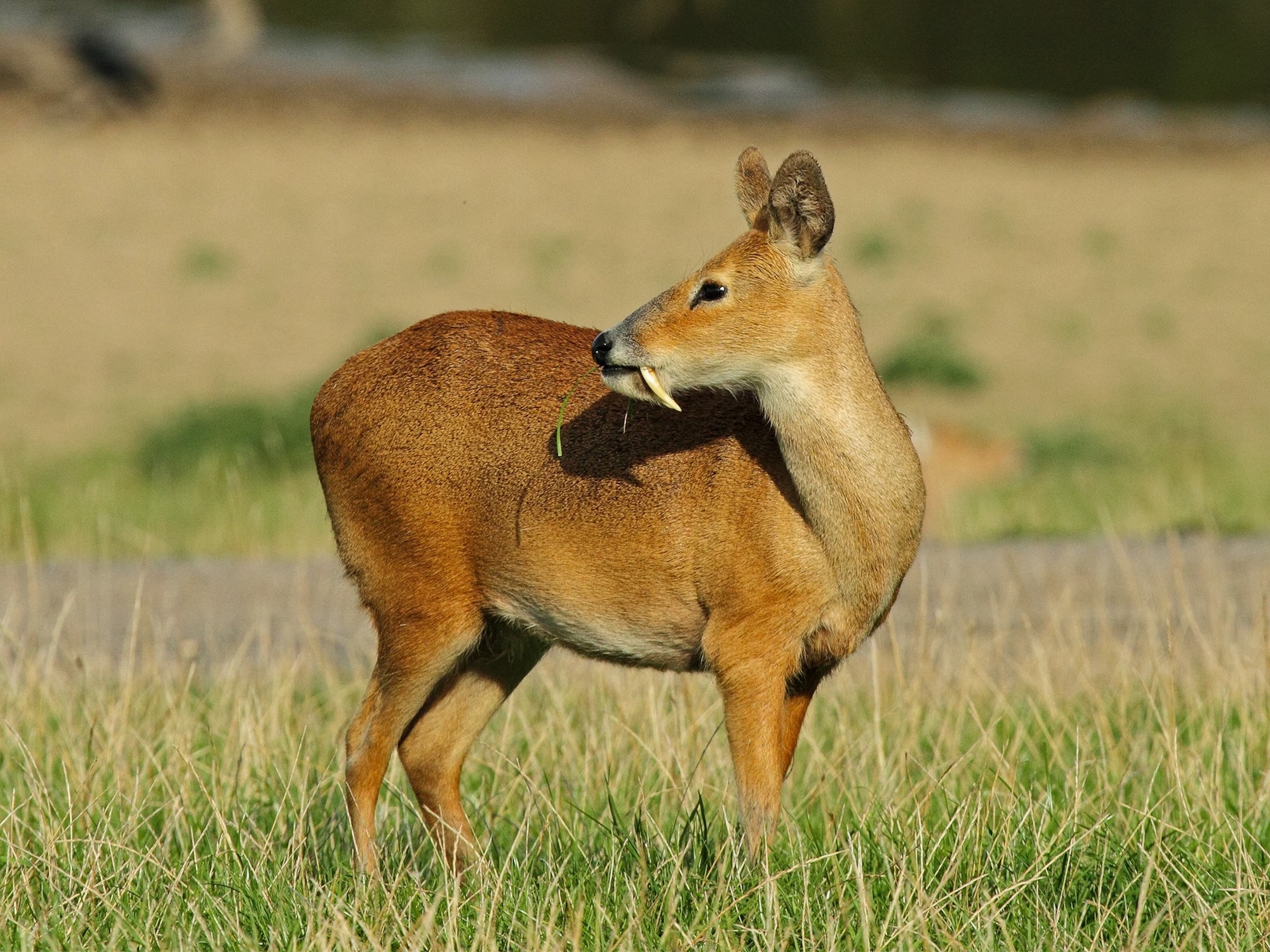
Don’t Be Fooled by the Fangs: Unveiling the Secrets of the Vampire Deer
Deep within the marshlands and woodlands of East Asia lurks a creature with a deceiving nickname – the water deer (Hydropotes inermis). Often referred to as the “vampire deer” due to its prominent canine teeth, this unique deer species is far more fascinating than its spooky moniker suggests.
A Deer Unlike Any Other
Unlike most deer, water deer lack antlers entirely. Males, however, boast impressive canine teeth that can grow up to two inches long. These elongated canines aren’t used for fighting predators, but rather for dominance battles with rival males during mating season. Water deer are solitary creatures, with the exception of brief interactions during breeding season. Females raise their fawns alone, teaching them the essential skills for survival in their watery habitat.
Masters of the Marsh
Water deer live up to their name, perfectly adapted for life in wetland environments. Their webbed hooves provide excellent traction on muddy terrain, and their thick fur keeps them warm in cool, damp environments. They are skilled swimmers, readily taking to the water to escape predators or navigate waterways. Their diet is more diverse than typical deer, consisting of aquatic plants, grasses, leaves, and even fruits.
Barking Deer
Another surprise about the “vampire deer” is one way they communicate is through barking! Both sexes will use a short bark as an alarm call or when feeling threatened. Water deer will bark repeatedly at people and each other. If challenged during the rut, a buck will emit a clicking sound. It is uncertain how this unique sound is generated, although it is possibly by using its molar teeth.
A Cause for Concern
While not currently classified as endangered, water deer are considered Vulnerable as populations face some threats. Habitat loss due to wetland drainage and conversion for agriculture is a significant concern. Additionally, in some areas, they are hunted for meat or considered agricultural pests.
Conservation in Action
Efforts are underway to protect water deer and their habitat. Creating protected areas, promoting sustainable land management practices, and raising awareness about these unique creatures are all crucial steps.
Beyond the Fangs
The water deer is a remarkable example of adaptation and resilience. Their unique combination of physical features and wetland lifestyle makes them a vital part of their ecosystem. By appreciating these “vampire deer” and supporting conservation efforts, we can ensure they continue to thrive in their watery world for generations to come.
So next time you hear about a deer with fangs, remember the water deer – a creature of surprising grace, adaptability, and a whole lot less scary than its nickname suggests!
More photos below ↓










